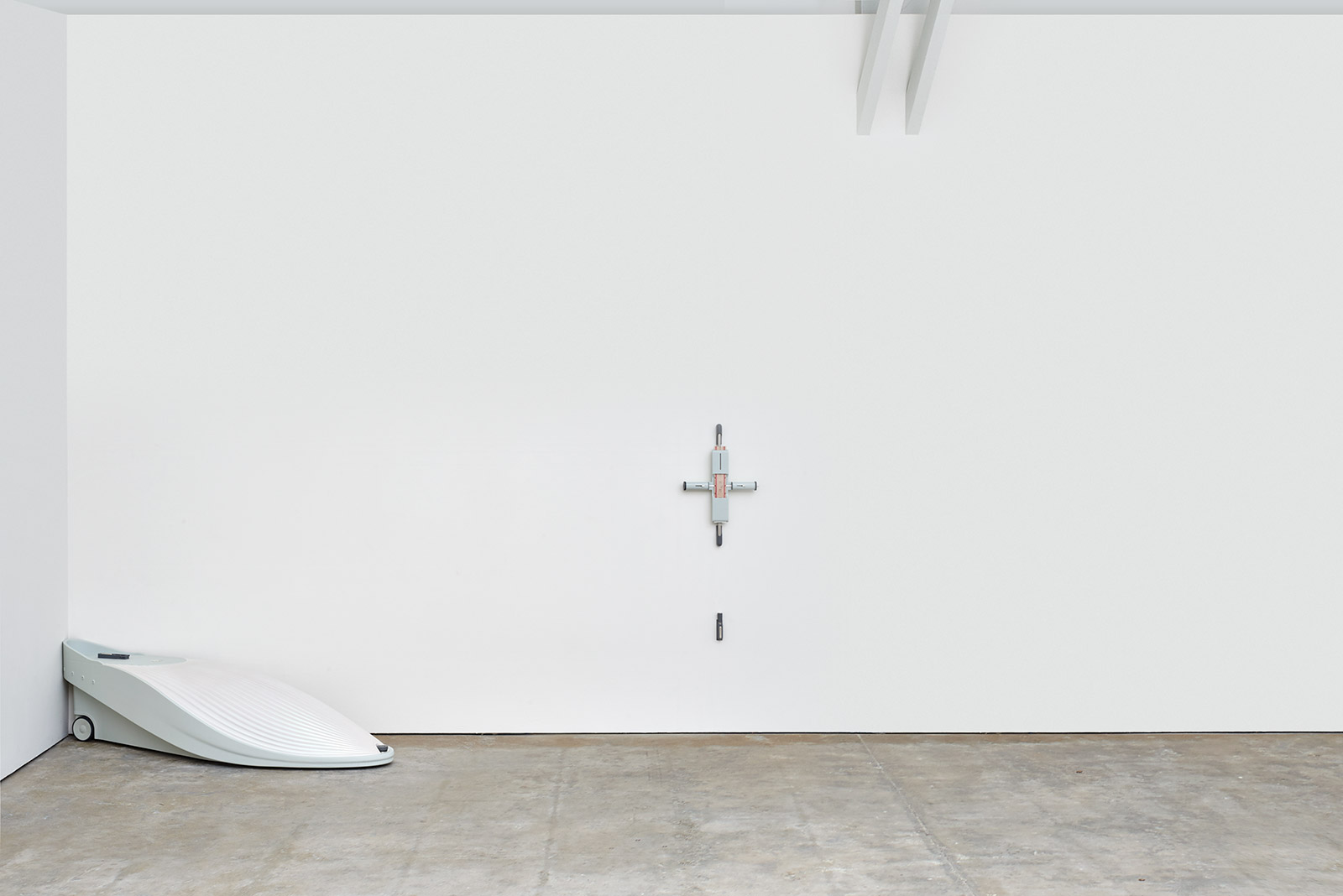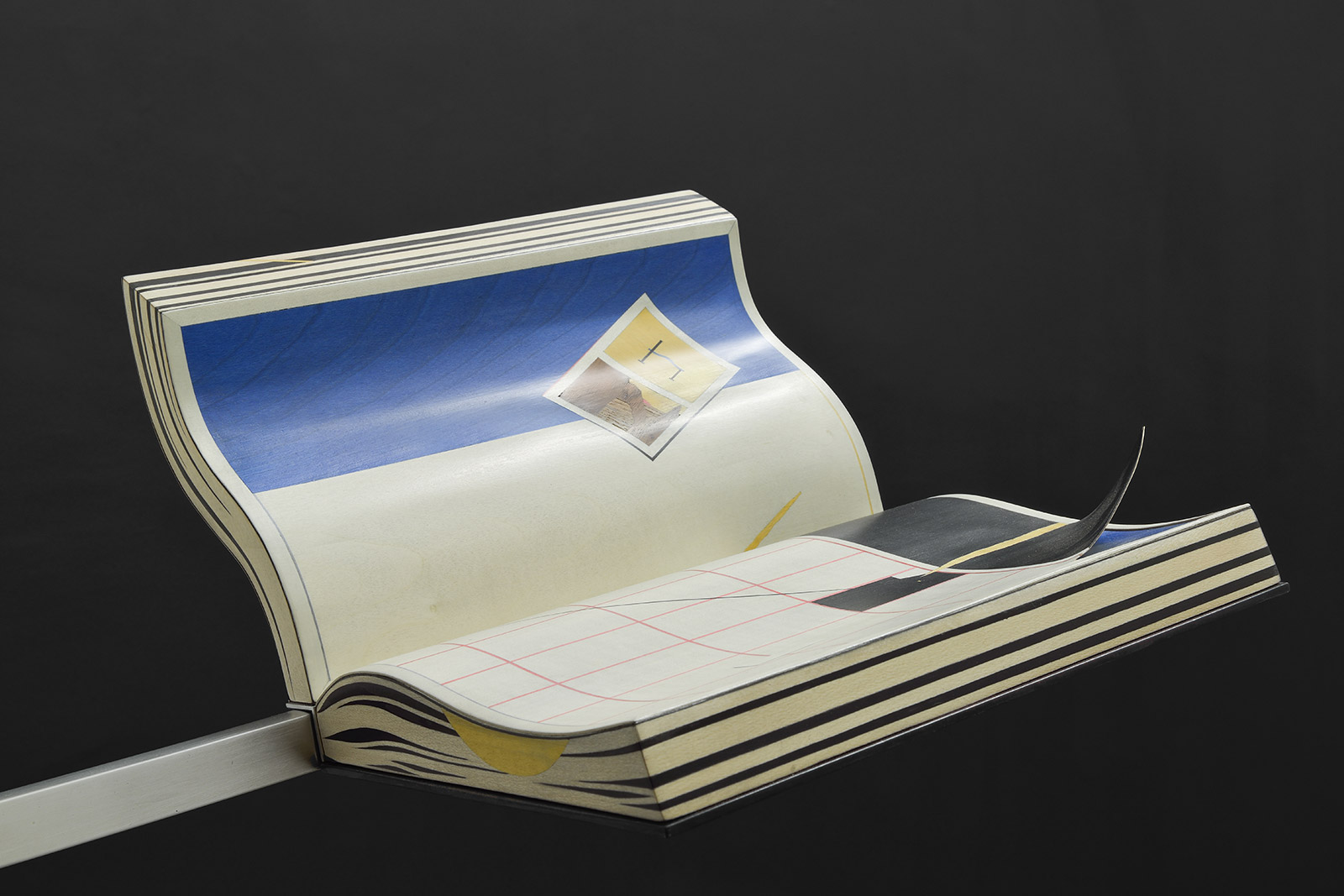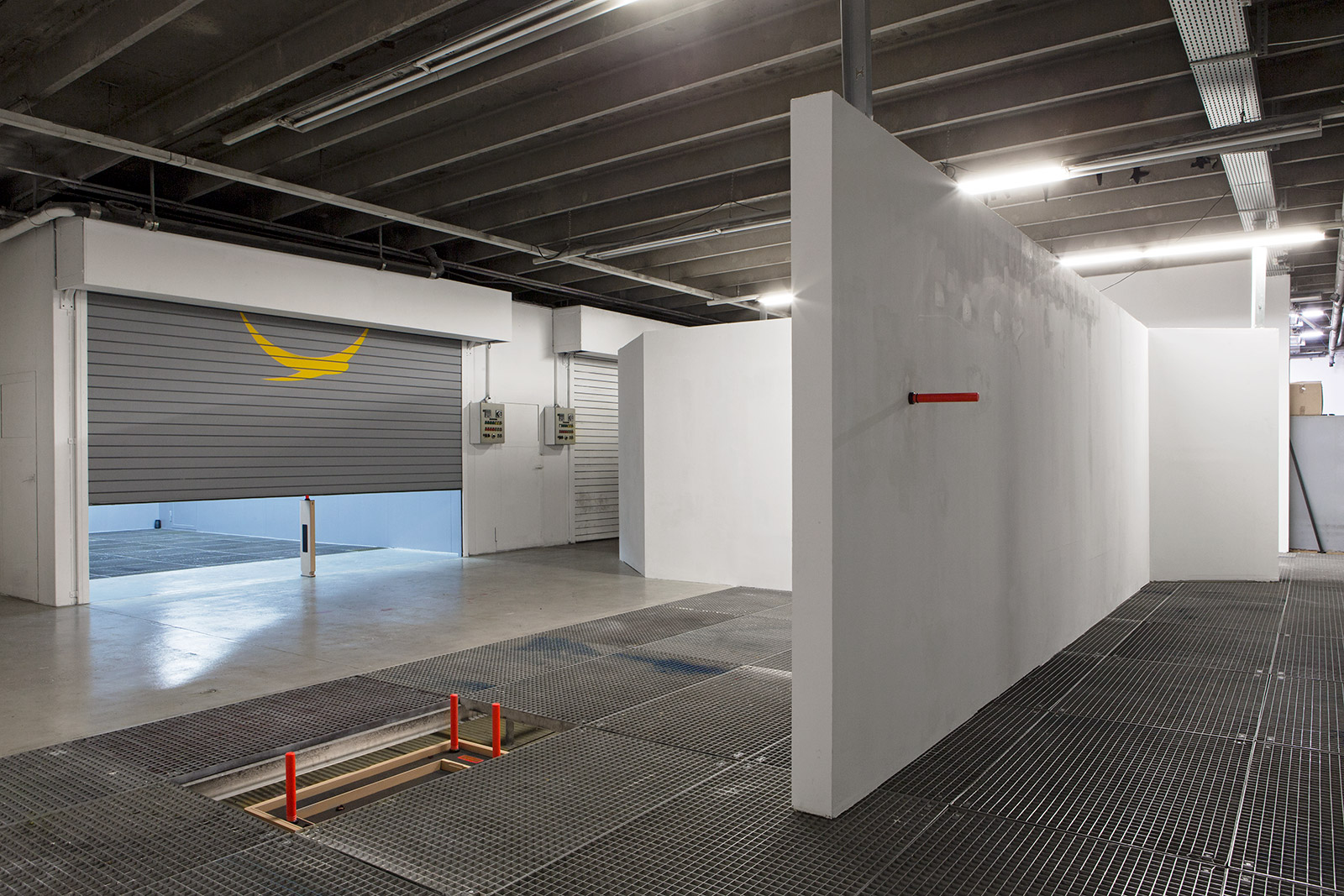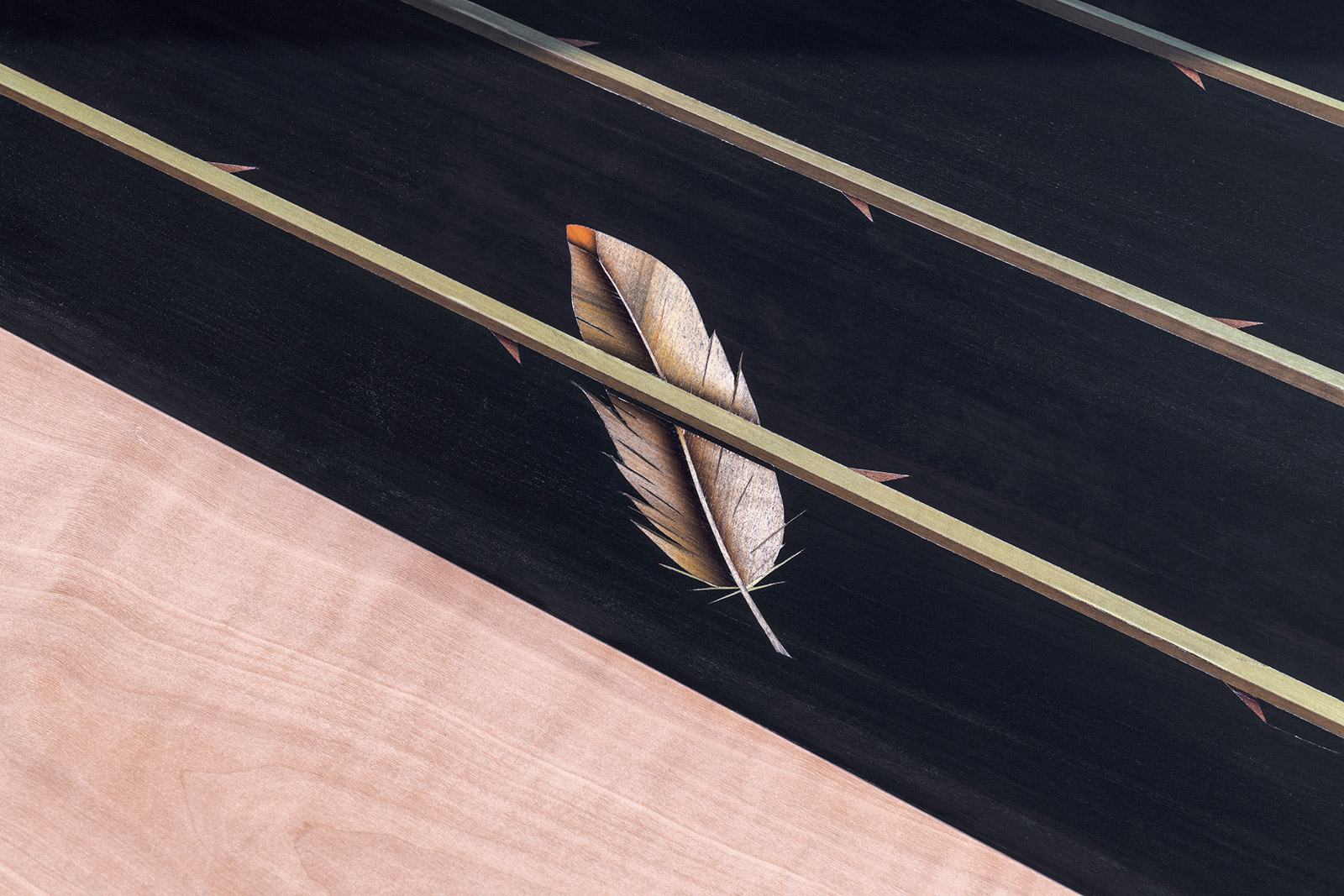Camille Blatrix on exploring desire and BMW technology
The artist will reveal his BMW Open Work commission at Frieze London

Curated by Attilia Fattori Franchini since its first iteration in 2017, the BMW Open Work initiative challenges artists to push the limits of their practice, utilising new innovations in technology and design. Paris-based artist Camille Blatrix has been tasked with this year’s commission, which will be unveiled at Frieze art fair (3 – 6 October). He teamed up with BMW Individual, the company’s specialised division for car customisation, which has allowed him to ‘harness unparalleled technical knowledge, skills and facilities in a truly open-ended way’.
We caught up with Blatrix to find out more about the project...
W*: Tell us about your commission for BMW Open Work.
Camille Blatrix: The commission is to me, a good opportunity to confront my artistic practice with an industrial product – in this case, a car. This confrontation excites me to think about the relation between an object of desire (the car, with defined functionality), and one that is more mental, emotional. Working together with BMW Individual, we created an object using car making processes and technology, bringing them towards abstraction. The output of this process is an installation, titled Sirens.
The car and the sculpture will be displayed together, one in front of the other, face to face. The car will light the sculpture and the inner parts of the sculpture will be also lit – they are in a dance of repulsion and seduction. Looking at the sculpture, also titled Siren, you are presented with a super clean surface, like a soft shell, very seductive, inspired by the front of a car but the back side is more organic, more like a cavity with a strange and dangerous object shaking inside. For me the sculpture has two faces: a seductive one and a dangerous one. I drew on the myth of Ulysses and the sirens as a loose narrative, structuring this idea of constant attraction and rejection.

il suo cuore vuoto al completo, 2013, by Camille Blatrix, aluminium, silver, installation view at Gasconade, Milan.
What attracted you to work specifically with BMW’s car customisation department?
BMW Individual is the department that makes cars unique and personal, and in my work I’m interested in individual feelings – especially the emotions induced by everyday objects. The contrast between standardised machines and the emotions we associate with them through use is really fascinating, such as driving fast to feel free. I like the idea that choosing the colour of your car can deepen the process of emotional appropriation, even if the core of the machine is exactly the same. This idea of personalising a generic object is interesting to me, like being served a cup at Starbucks with your name handwritten on it.
RELATED STORY

Did you incorporate any new technical processes through this collaboration?
For the first time I used textiles, more specifically Alcantara. It’s a material I was previously afraid of, but during my visit I was amazed by BMW’s techniques and the way they cover sharp and industrial shapes with leather to make them smooth and comfortable. I thought this contrast between the leather interior and aggressive exterior of the car was perfect for the project and this idea of double-sided sculpture.
Among other things, your work is rooted in manufacturing and production. Where does this interest stem from?
I think it’s a very naturalist approach. I live in a big city so every day, when I open my window, I see people at speed trying to interact with weird machines and dealing with highly technological objects. I hope one day that when I open my window I will see trees and people fishing.
What does desire mean to you?
Desire to me is being scared. The first time I saw my wife, I realised I have never been so scared in my life – my whole body was shaking. Talking to her was the most dangerous and vertiginous thing I’ve ever done. I didn’t sleep for a week before our first date. That’s desire: attraction and danger. But if you experience danger – which is not easy – you will discover the most beautiful feelings you’ve ever had. I guess some people can experience this with objects and products, a phone or a car.

Soul, 2016, by Camille Blatrix, painted MDF, resin, wood, silver, inox, aluminium, plastic.

‘New Day Rising’, installation view at Taylor Macklin, Zurich in 2018.

Fortune, 2019, by Camille Blatrix, installation view at Lafayette Anticipations, Paris.
Receive our daily digest of inspiration, escapism and design stories from around the world direct to your inbox.
-
 How We Host: Interior designer Heide Hendricks shows us how to throw the ultimate farmhouse fête
How We Host: Interior designer Heide Hendricks shows us how to throw the ultimate farmhouse fêteThe designer, one half of the American design firm Hendricks Churchill, delves into the art of entertaining – from pasta to playlists
-
 Arbour House is a north London home that lies low but punches high
Arbour House is a north London home that lies low but punches highArbour House by Andrei Saltykov is a low-lying Crouch End home with a striking roof structure that sets it apart
-
 25 of the best beauty launches of 2025, from transformative skincare to offbeat scents
25 of the best beauty launches of 2025, from transformative skincare to offbeat scentsWallpaper* beauty editor Mary Cleary selects her beauty highlights of the year, spanning skincare, fragrance, hair and body care, make-up and wellness
-
 Out of office: The Wallpaper* editors’ picks of the week
Out of office: The Wallpaper* editors’ picks of the weekFar from slowing down for the festive season, the Wallpaper* team is in full swing, hopping from events to openings this week. Sometimes work can feel like play – and we also had time for some festive cocktails and cinematic releases
-
 The Barbican is undergoing a huge revamp. Here’s what we know
The Barbican is undergoing a huge revamp. Here’s what we knowThe Barbican Centre is set to close in June 2028 for a year as part of a huge restoration plan to future-proof the brutalist Grade II-listed site
-
 Out of office: The Wallpaper* editors’ picks of the week
Out of office: The Wallpaper* editors’ picks of the weekIt’s wet, windy and wintry and, this week, the Wallpaper* team craved moments of escape. We found it in memories of the Mediterranean, flavours of Mexico, and immersions in the worlds of music and art
-
 Each mundane object tells a story at Pace’s tribute to the everyday
Each mundane object tells a story at Pace’s tribute to the everydayIn a group exhibition, ‘Monument to the Unimportant’, artists give the seemingly insignificant – from discarded clothes to weeds in cracks – a longer look
-
 Out of office: The Wallpaper* editors’ picks of the week
Out of office: The Wallpaper* editors’ picks of the weekThis week, the Wallpaper* team had its finger on the pulse of architecture, interiors and fashion – while also scooping the latest on the Radiohead reunion and London’s buzziest pizza
-
 Out of office: The Wallpaper* editors’ picks of the week
Out of office: The Wallpaper* editors’ picks of the weekIt’s been a week of escapism: daydreams of Ghana sparked by lively local projects, glimpses of Tokyo on nostalgic film rolls, and a charming foray into the heart of Christmas as the festive season kicks off in earnest
-
 Wes Anderson at the Design Museum celebrates an obsessive attention to detail
Wes Anderson at the Design Museum celebrates an obsessive attention to detail‘Wes Anderson: The Archives’ pays tribute to the American film director’s career – expect props and puppets aplenty in this comprehensive London retrospective
-
 Meet Eva Helene Pade, the emerging artist redefining figurative painting
Meet Eva Helene Pade, the emerging artist redefining figurative paintingPade’s dreamlike figures in a crowd are currently on show at Thaddaeus Ropac London; she tells us about her need ‘to capture movements especially’